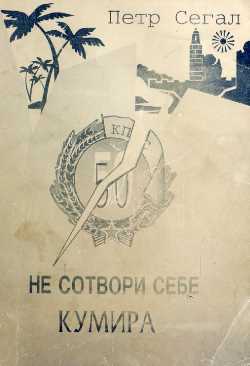|
|
|
From the
book
"Shall not make for
yourself an idol"
|
|
The author of this
book, Peter Segal, was
born in Krasnostav in 1920.
The most part of his Kaplun-Segal
meshpucha was killed in Holocaust.
Peter immigrated from Ukraine to
Israel in 1991.
compiled
by Leon
Geyer, descendant of Reznik
family from Krasnostav, is a
resident of N.Y.
artist Moshe
Hemain, descendant of
Kaplun family from Krasnostav, is a
resident of Israel. |
Compiled by Leon Geyer

|
|
....Krasnostav had Jewish, Ukrainian,
Polish and German residents. The
Ukrainians generally settled on the
outskirts of town by their fields and
worked in agriculture, while the Jews
lived closer to the center of town
around the large square where fairs took
place every Friday in summer and winter.
On regular days, a few dozens of
craftsmen’s workshops open from dawn
till dusk lined both sides of the
square. A dozen of stores were doing
brisk business there as well. On one
side, the square faced an Orthodox
church; on the other, there was a bridge
that led to a Ukrainian school on the
other bank of the river. I still
remember the fear I felt when the church
bells tolled and people carrying icons
came out of the church. There were two
smaller squares to the left and right of
the market square – that is where the
big and the small synagogues were.
I was always awed by them, in a way.
246 Jews lived in Krasnostav in 1847,
while 50 years later – in 1897 – their
number increased to 1,222, which
accounted for more than half of the
town’s population.
The streets where Jews
lived extended radially away from the
square. They were named after Ukrainian
villages where they led: Manyatinskaya,
Horitskaya, Yablonivskaya, and
Khorovetskaya. In between the four
major streets, there were at least a
dozen of smaller streets and lanes
dotted by Jewish houses, workshops,
sheds, and barns.
The town had a river and four ponds with
fish. People were bathing and doing
their laundry there in the summer, and
skated in the winter using home-made
wooden skates.
The terrain was flat; a forest was
located about three kilometers away from
the town by the village of Guta, on the
way to Khorovets.
Krasnostav is located
20 to 40 kilometers away from the cities
of Slavuta, Shepetovka, and
Novograd-Volynsk. They were accessible
by horse-drawn carts. There were two to
three Jewish cart drivers called
balagulas that owned a pair of horses
and a cart; they gathered five to six
passengers and took them to these
cities. And later on, when the railroad
was completed, they took their
passengers to the Maidan-Vila Station or
to the Dubrovka (Radulino) Junction,
which were 15-20 kilometers away.
The road was bad – an ordinary dirt road
that turned into ? swamp in spring and
fall. During these seasons, horses could
barely pull their load; people had to
walk alongside pushing the cart.
I remember .... continue
|
|